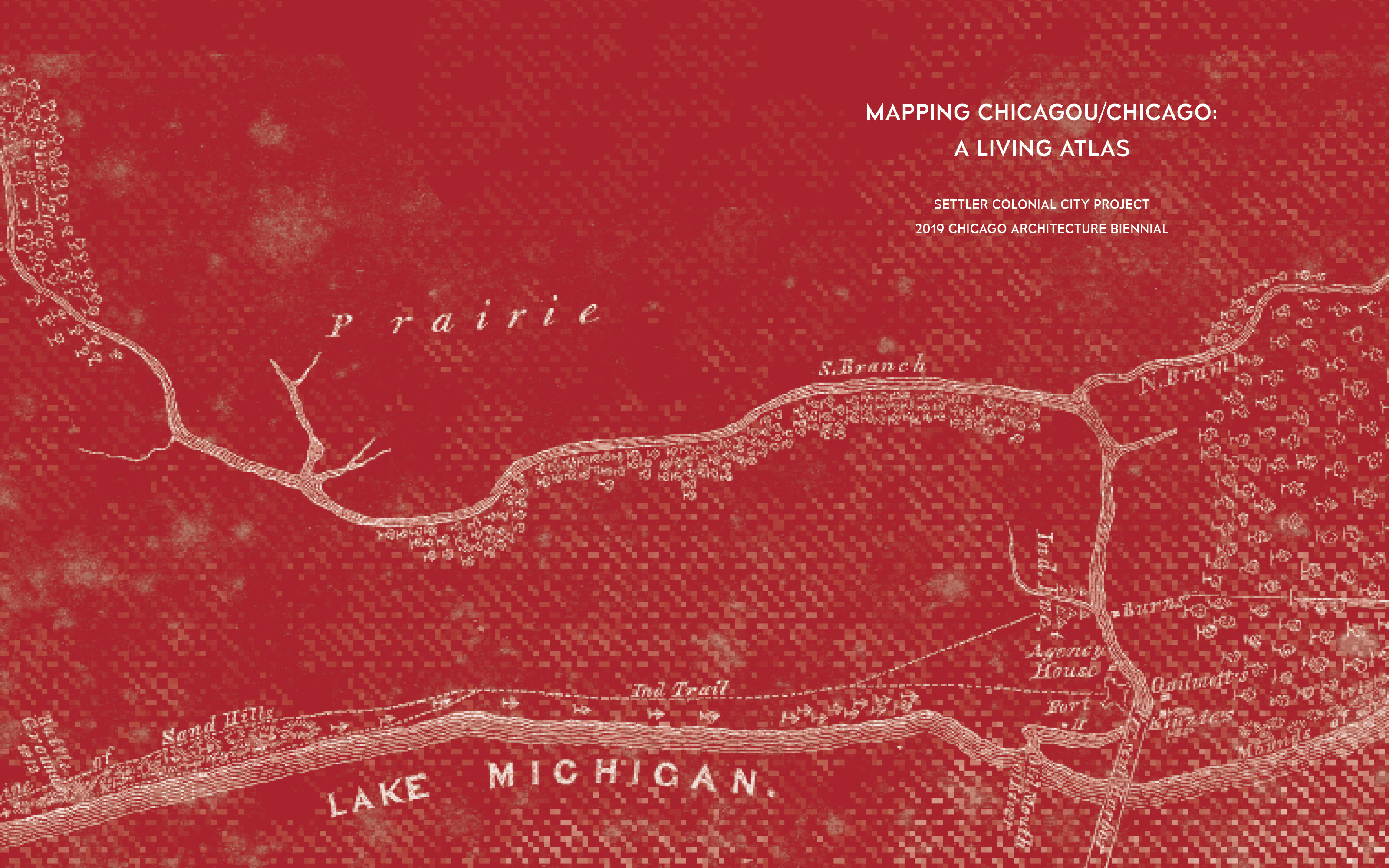1. Mapping Chicagou/Chicago

MAPPING CHICAGOU/CHICAGO
SCCP 2019
Mapping Chicagou/Chicago: A Living Atlas brings together three geographies that have been at once produced by and held apart by settler colonialism: the geography of Indigenous displacement in the United States; the geography of colonial land-filling and water-seizing in and around Lake Michigan; and the geography of Chicago’s urban development. Bringing these geographies together, as we do here, allows for a documentation of the way in which the contemporary city of Chicago has been shaped by still-ongoing settler colonialism and the way in which Indigeneity has persisted and thrived even in the context of this colonialism’s displacements, dispossessions, and violence.
This documentation contests the colonial framing of settler colonialism in the United States as merely a historical phenomenon: a moment, long since passed, in the history of the United States. In fact, our documentation of Chicago as a city located on both occupied and unceded Indigenous land reveals the city’s geography as a product of conflict, violence, and struggle that continue into the present. The maps in this publication, then, constitute a living atlas: a counter-geography that contests the colonial geography posing colonialism in Chicago, in the United States, and across the globe, as a historical artifact. This counter-geography calls for the world to be changed—or decolonized—to do justice to the violence by means of which the world was made.
We entitle our living atlas Mapping Chicagou/Chicago in order to reference the way in which the colonization of Chicagou not only yielded Chicago but continues to structure relationships between land, people, and the multifarious elements of what in colonial ontology is called such things as “the environment,” “nature,” or “the natural world.” The name “Chicago” references a French rendering of the Indigenous Miami-Illinois word for a type of wild onion, the shikaakwa, known in English as ramps. The word was later turned into checagou or chicagou, also in reference to a type of garlic that grew in the forests and plains of the region. With the colonization of the place known as Chicagou, the ramps and garlic that were harvested and sustained by Indigenous people in these forests and plains were replaced by wheat, a crop indigenous to the Fertile Crescent that was brought to North America by British colonialism.
While the colonial replacement of shikaakwa by wheat may have been almost total, settler colonialism yields practices of displacement, dispossession, and violence that continue to structure its development as long as it exists. Chicagou, then, lives on, both as a name for Indigenous presence in Chicago—a city with the third-largest urban Native American population in the United States—and as a name for all those spaces in Chicago that have experienced colonizing displacement, dispossession, and violence.
In Imprints: The Pokagon Band of Potawatomi Indians and the City of Chicago, Pokagon historian John N. Low shows how, in the early 20th century, the Pokagon Potawatomi appropriated colonial strategies and tools to recover land that colonialism had taken away from them. As Low writes, the Pokagon Potawatomi responded to colonialism “by using maps—the very tools that had been used in earlier times to deprive them of their lands—in their effort to regain some of their territory.” Inspired by this effort, we, too, aim to re-purpose a colonial cartography—the cartography of standardized and presumably objective maps—against colonialism itself.
Read and download this publication.